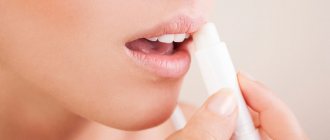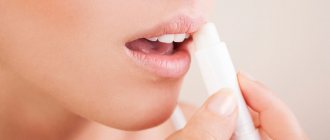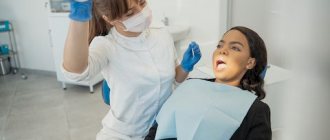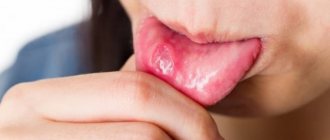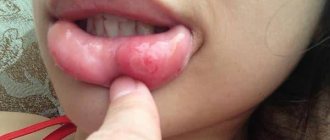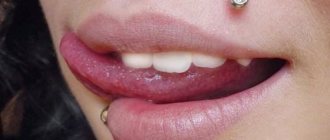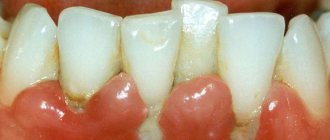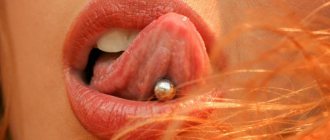Why do lips dry out?
Before looking for a way to quickly moisturize your lips, you should find out the cause of the problem. Depending on what formed the basis for the lack of moisture, you can choose a suitable remedy for complete restoration.
Causes of dry lips:
- Harmful environment. Cold, heat, windy weather and poor air quality. Cold and heat provoke a decrease in moisture in tissues. The condition worsens during strong winds.
- Stress. Situations when a person is very nervous and involuntarily licks his lips (a standard human reaction). The saliva that covers the delicate skin dries quickly, drying out the problem area.
- Medicines that affect the salivary glands, for example, drugs aimed at reducing appetite.
- Oral care products with high fluoride content. The element is characterized by a dehydrating effect. Thin skin is not able to retain moisture for a long time, as the dermis does on other parts of the body.
- Cosmetics: long-lasting lipsticks, matte formulations, tints and products with a dry/powdery effect. Pigments for artistic makeup. Powdering for better durability of conventional products speeds up drying.
- Unhealthy lifestyle: poor nutrition worsens the situation with vitamin saturation of the whole body. Lack of water (maintaining water balance is the key to health), alcohol, and tobacco are harmful.
- Diseases that cause dry mouth. These include allergic reactions, lip burns, dental diseases, inflammatory pathologies, bacterial and hormonal diseases.
Excessive dryness can be caused by a cold with a profuse runny nose and nasal congestion. With frequent inhalation and exhalation through the mouth, the lips become chapped and dry. During such a period, it is especially important to know how to keep your lips moisturized.
Reasons for development
In the clinical practice of most specialists, there are cases where cheilitis on the lips developed on its own or was a side effect of a serious disease of the internal organs or damage to the mucous membrane. Among the most likely causes of the development of the disease are:
- inflammation of the mucous membrane with dermatoses, erythematoses or lichen planus;
- infectious diseases: syphilis, tuberculosis, etc.;
- psoriasis and other skin problems.
Among the unfavorable external factors, it is worth noting an excessive amount of ultraviolet radiation, strong wind, flows of cold or hot air from climate control equipment or ventilation in industrial premises. Signs of cheilitis are often observed in people who work in open areas in direct sunlight.
A separate group includes manifestations of allergic cheilitis, which developed after contact of the lip mucosa with aggressive chemicals or prolonged exposure to ultraviolet radiation. Sometimes doctors observe the clinical picture of secondary cheilitis, when the development of the disease is caused by eczema, neuritis of the facial nerve, pathologies of the muscles and tissues of the facial part of the skull.
What should healthy lips look like?
Those who know how to moisturize their lips can boast of their naturally beautiful appearance. The natural red hue is due to the location of blood vessels near the surface.
Signs of healthy lips:
- smooth skin;
- smooth texture;
- pleasant natural shade;
- no peeling or cracking.
Healthy lips have even, uniform pigmentation without light or dark areas. Healthy skin looks elastic, it is not prone to irritation, peeling and allergies.
If a whitened area is detected, it means that the delicate skin does not receive enough hydration or there are not enough vitamins in the body:
- A,
- E,
- WITH.
First you need to learn how to use the right cosmetics. This applies to all people, because even if there are no problems with the lips, a careful attitude will not be superfluous.
You need to be able to choose the right cosmetics. And the first thing people pay attention to is the composition. Oil-based products should contain only natural ingredients:
- jojoba oil,
- cocoa,
- shi,
- nut oils.
It is best to buy products at a pharmacy or labeled “pharmacy product”. This means that cosmetics:
- passed dermatological tests,
- approved by experts
- considered safe.
In addition to moisturizers, there are small life hacks to improve the color and contour of your lips.
Shock freezing is often used: using ice to massage the lips. With prolonged exposure to cold, the appearance of the lips deteriorates, but short periods of exposure to shock cold cause the capillaries to expand sharply. Blood flows closer to the skin and provides:
- more active saturation with oxygen and nutrients,
- more saturated lip color.
The most common advice for lip care is the use of special lipstick. But there are several ways to moisturize your lips without chapstick.
Symptoms of the disease
With atopic cheilitis, the red border around the lips is affected; the most severe foci of inflammation are localized in the corners of the lips. Initially, the patient experiences slight swelling of the lips. He complains of itching and dry mouth. A pinkish, inflamed patch called erythema then appears on the affected areas.
After the appearance of erythema, itching and dryness, along with other manifestations of the inflammatory process, decrease. Then, with the development of infiltration, the red border of the lips begins to peel off. Many cracks and grooves are formed. If the disease is a consequence of the development of atopic allergies, similar manifestations will appear on other parts of the body - red spots on the elbows and knees, also itchy and flaky.
As a rule, atopic cheilitis is a seasonal phenomenon. The period of exacerbations is autumn and winter. In young patients, the disease goes away with the end of the “transition period” - however, subsequently there is a high probability of relapses.
Causes of lip inflammation, cheilitis
Due to the variety of lip diseases (cheilitis), each of them may have its own cause or group of causes. These may be allergic reactions to food or cosmetics, infections (viral, bacterial, fungal), deficient conditions of the body (for example, iron deficiency), the effects of medications, excessive UV radiation, internal pathologies, etc. Even factors such as exposure to constant wind, cold conditions (that is, weather factors), and increased dry skin can lead to inflammation of the lips (so-called meteorological cheilitis).
Exfoliative cheilitis. Usually it is chronic in nature and is expressed in inflammation of the border (edge) of the lips, most often on the lower lip. It is especially common in women between twenty and forty years old, who often lick or bite their lips. The reasons have not been fully established, but suggest genetic factors and pathologies of the immune system.
Haylit Manganotti. Represents a precancerous condition of the lower lip. Usually appears in men over sixty years of age. 1-2 erosions appear on the practically unchanged border of the lower lip. It is believed that among the provoking factors are: injuries, excessive UV radiation, vitamin A deficiency, diseases of the stomach and intestines. Predisposing factors: age-related changes in labial tissues, decreased efficiency of mucous membrane regeneration.
Eczematous cheilitis. Sharp, rapid, accelerated swelling of the lip border. Small bubble formations appear, spreading to the skin of the lips. There can be many reasons: infection with microorganisms, a reaction to fillings, dental materials and oral hygiene products, to food and medicine.
Atopic cheilitis. Damage to the borders of the lips, spreading to the adjacent skin, especially to the corners of the mouth. It is characteristic that the inflammation does not spread to the mucous membrane of the lips. Usually, but not always, it accompanies the symptoms of atopic dermatitis (it has a genetic nature) when allergens are introduced into the body.
Candidal cheilitis. Usually a consequence of candidal stomatitis (fungal). But an equally common case is a lesion in older people with a low bite of the teeth, leading to deep folds at the corners of the mouth. Folds, if hygiene is insufficient, are a place where fungal microflora accumulates.
Actinic cheilitis. The reason is excessive solar irradiation, or more precisely, irradiation with the UV component of the solar spectrum. All common symptoms of lesions and cheilitis appear on the lips.
Glandular cheilitis. A specific type or type of lesion, and is associated with inflammation of the smallest salivary glands located in the mucous membrane of the lips. It can develop both against the background of congenital anomalies of the labial salivary glands, and as a consequence of certain dermatological diseases. A characteristic symptom is the periodic release of droplets of saliva on the lips or pus during secondary infection.
Granulomatous cheilitis. The main symptom is thickening of the lips, especially the lower ones, and trunk-shaped protrusion of the lips. Accompanied by other symptoms (fever, headache). Associated with the formation of small granulomas in the tissues of the lips, and the danger is associated with constant relapses and a persistent increase in the size of the lip tissues.
Allergic cheilitis of contact type. Delayed allergic reaction to lipstick, toothpaste, dental materials (for example, denture materials).
Treatment of atopic cheilitis
Treatment of atopic cheilitis is complex. General measures applied regardless of the etiology of the disease are the elimination of the provoking factor - in particular, allergens. Therapy is prescribed using antihistamines, corticosteroids and tranquilizers (if the disease occurs against the background of chronic stress).
An important stage of treatment is the prescription of vitamins and vitamin complexes. For topical use, the use of medicinal ointments is recommended.
It is important to pay attention to the patient’s nutrition. Potential allergens, citrus fruits, sweets, salty and spicy foods should be excluded from the diet. Alcohol consumption and smoking are completely excluded.
If you approach the process of treating cheilitis correctly and responsibly, the prognosis in most cases will be favorable. Prevention of this disease includes timely consultation with a doctor, getting rid of chronic diseases, taking antihistamines if you have allergies, as well as taking vitamins and good nutrition.
Signs, types and methods of treating cheilitis on the lips
- Causes
- Symptoms
- Kinds
- Treatment
Redness, dryness, and cracks on the lips are familiar to many. These are pronounced symptoms of cheilitis, popularly called “jams”, an inflammatory lesion of the red border and nearby areas of the skin. Almost every person in the world has experienced symptoms of cheilitis, but not everyone turns to specialists with this problem.
Doctors rarely use the term “cheilitis” to describe a specific disease; usually this word refers to an inflammatory process. However, cheilitis in any form is a disease that requires specialist consultation and appropriate treatment.
Cheilitis does not have a permanent place of residence; it can be diagnosed by almost any doctor, since there are many reasons for the appearance of the disease. But most often, dermatologists and dentists are involved in its diagnosis and treatment.
Causes
The causes of inflammation on the lips may be the following factors:
- Dysfunction of the nervous system;
- Genetic predisposition;
- Decreased immunity, allergic reactions;
- Ultraviolet irradiation;
- Exposure to extreme weather factors - cold, wind, dry air;
- The presence of chronic foci of infection in the oral cavity, such as caries, pulpitis, periodontitis;
- Traumatic damage to the red border.1
Symptoms
The picture of the disease depends on the type of inflammatory process and its causes. Common symptoms include:
- Redness and swelling of the red border of the lips;
- Excessive thickening of the skin;
- Pain in the area of inflammation, especially during eating;
- Dry skin and the formation of cracks and erosions on it;
- A sharp change in the color of the damaged mucous membrane.
Types of cheilitis
According to the modern classification of cheilitis, diseases include two main groups: independent inflammatory processes (granular, allergic, meteorological, contact, etc.) and symptomatic lesions (eczematous, atopic and others). The division into such types is based on the causes and characteristics of the clinical course of the disease2.
Glandular cheilitis
The disease is characterized by an inflammatory process in the small salivary glands located on the border of the red border of the lips. The inflammatory process is located in the area of the lower lip. This disease is a consequence of the abnormal structure of the lower lip. The disease has a characteristic clinical picture and begins with the appearance of bright red dots filled with saliva on the mucous membrane of the lips and red border. Even if you blot your lips, droplets of saliva appear again after a while.
Glandular cheilitis includes three subtypes:
- Simple, in which the lower lip is slightly enlarged in size, and small nodules covered with saliva are visible on the mucous membrane.
- Secondary, which develops due to chronic diseases (systemic lupus erythematosus, rheumatoid arthritis, etc.).
- Purulent - a rare type, which is characterized by infection of the ducts of the salivary glands with subsequent release of pus.
Glandular cheilitis is treated with antibacterial agents, corticosteroid ointments and drugs to simulate epithelialization. Doctors additionally prescribe the patient vitamins A and B. If conservative treatment is unsuccessful, dentists resort to plastic surgery3.
Atopic cheilitis
This pathological condition is a separate manifestation of dermatitis, neurodermatitis and mainly affects people aged 7-17 years. A key risk factor is a genetic predisposition to an allergic reaction.
Symptoms of the atopic type are itching, redness, and slight swelling of the red border in the corners of the mouth. Often this inflammatory process spreads to the skin. The patient gradually develops dryness, cracks and crusts at the site of scratching. As the acute phase subsides, increased peeling of the skin of the lips is observed, and small cracks form in the corners of the mouth.
Treatment of the atopic form consists of systemic administration of antihistamines, vitamins, sedatives, and local treatment with corticosteroid ointments.
Macrocheilitis
The disease refers to pathologies associated with impaired lymph outflow. A symptom of macrocheilitis is painless lip enlargement. The disease occurs in a chronic form, with constant alternation of stages of exacerbation and remission. Diagnosis is made by visual confirmation of edema and fibrous inflammation.
Treatment of macrocheilitis in the early stages is medicinal and therapeutic. Doctors recommend the patient thermal baths, massaging the damaged area of the red border, paraffin therapy, sclerosing therapy. When the disease develops, experts advise radical intervention.
Meteorological cheilitis
Adverse weather conditions can cause inflammatory lesions of the red border. Symptoms of the meteorological type are infiltration and hyperemia of the lips. In this case, the outer layer becomes covered with scales, and increased dryness of the red border is noted. Patients complain of dryness, a feeling of “tightness” of the lips, and increased peeling.
Treatment of the meteorological form is aimed at eliminating the effect of the irritating factor. In such cases, experts advise taking nicotinic acid and B vitamins. Local treatment is carried out with hygienic lipstick and photoprotective cream.
Exfoliative cheilitis
This is an isolated disease of the red border, manifested by peeling of the epithelium and disruption of its keratinization processes. The main factors are genetic predisposition and lack of immunity.
Symptoms of the exfoliative type depend on the clinical form of the disease:
- 1 The dry type of inflammation is characterized by the formation of a thin strip of scales between the red border and the mucous membrane. After their removal, the hyperemic surface of the lip is exposed, which is soon re-covered with the same scales. These cycles can repeat for decades.
- 2 In the exudative form, patients complain of a layer of yellow-brown crusts in the area of the lower lip. After removing such growths, a bright red surface covered with white exudate is noticeable. In such cases, the crusts tend to be constantly restored, which causes the cyclical nature of the pathology.
Treatment of exfoliative cheilitis in the dry form involves lubrication with moisturizing ointments, lipsticks, and at the exudative stage, patients undergo complex therapy using immunostimulants.
Actinic cheilitis
Chronic inflammation of the skin of the lips, which forms due to exposure to ultraviolet rays, develops mainly in spring and summer.
Actinic type symptoms are determined depending on the form of the disease:
- 1 The dry stage is manifested by a swollen red border covered with whitish scales.
- 2 With the exudative form, bubbles appear, which, when cracking, form cracks and erosions.
Treatment of such cheilitis consists of protecting the lips from direct sunlight, moisturizing the surface of the lips and treating it with products with protective UV filters. In severe cases, specialists resort to the use of corticosteroid ointments.
Eczematous cheilitis
Chronic allergic inflammation can occur on its own or be a symptom of facial eczema. Allergens can be different - germs, cosmetics, medications, certain foods, toothpaste and much more.
The symptoms of such cheilitis are very diverse. First, bubbles appear against the background of a bright red lip. These elements gradually merge, crack, and become wet. Over time, the surface becomes covered with scales. Patients are bothered by itching, burning, difficulty speaking and opening their mouth.
Treatment is carried out at two levels: systemic (antihistamines and vitamin preparations) and local (corticosteroid cream and antiseptics).
Contact allergic cheilitis
The disease occurs after frequent contact of the skin of the lips with chemicals that cause an allergic reaction. Swelling of the lips can spread to the mucous membrane and skin. After some time, individual areas of peeling, blisters, and erosions are noticeable.
Treatment of the contact allergic form involves eliminating contact with the chemical factor. Patients also use corticosteroid ointments and systemic antihistamines.
Chronic cracked lip
Inflammation of the deep layers of the skin of the lips provokes the formation of cracks. The causes of the disease may be climate change or trauma to the red border.
Treatment of cracks is carried out after identifying the cause of the damage. Local hormonal ointments, painkillers and agents for restoring the mucous membrane are used.
Hypovitaminous cheilitis
The main reason for this inflammation is insufficient intake of vitamins A, E, B into the body. Symptoms include chronic fissure, burning sensation and dryness in the red border area.
Treatment includes taking vitamin preparations and local treatment of the inflammation with antiseptics3.
How to treat cheilitis on the lips?
Treatment of cheilitis depends on the type and extent of the disease. In most cases, therapy is complex. At the systemic level, doctors recommend getting rid of the causative factor, prescribing antibacterial medications and immunostimulants.
Local manifestations are treated with hormonal ointments and antiseptics. During recovery, it is advisable to lubricate your lips with a drug that stimulates the immune system.
With reduced local immunity, inflammation often occurs not only on the lips, but also in the oral cavity and its mucous membranes. The drug Imudon® will help strengthen local immunity. This is a local drug for the treatment and prevention of infectious and inflammatory diseases of the oral cavity and pharynx4. Imudon® interacts with the mucous membrane directly at the site of the disease, providing protection against bacterial, fungal and viral pathogens. Lactobacilli contained in the drug relieve inflammation and promote healing and restoration of the oral mucosa5.
Treatment of cheilitis on the lips in children is carried out by a pediatric dentist or dermatologist using broad-spectrum antibacterial medications and natural-based restoratives.
The article was prepared based on materials:
1. Lutskaya I.K. Diseases of the lips - cheilitis / I.K. Lutskaya // Consilium Medicum. Dermatology (Add.). – 2016. – No. 1. – 58-62 s. 2. Borovsky E. V. Diseases of the mucous membrane of the mouth and lips. / E. V. Borovsky, A. L. Mashkilleyson. – M.: Medicine, 1984. – 116-129 p. 3. Lutskaya I.K. Clinical manifestations of independent lip diseases / I.K. Lutskaya // Medical news. – 2011 – No. 11. – 4-8 s. 4. INSTRUCTIONS FOR MEDICAL USE OF THE MEDICINE Imudon® dated 07/02/2018. 5. Shumsky A.V. Imudon in the treatment of infectious and inflammatory diseases of the oral mucosa. Scientific and practical journal “Dentistry”, 2000, No. 6, volume 79, p. 53-54.
The material was developed with the support of Abbott to improve patient health awareness. The information in the material does not replace the advice of a healthcare professional. Contact your doctor.
RUIMD192468 from 08/16/2019
To learn more
